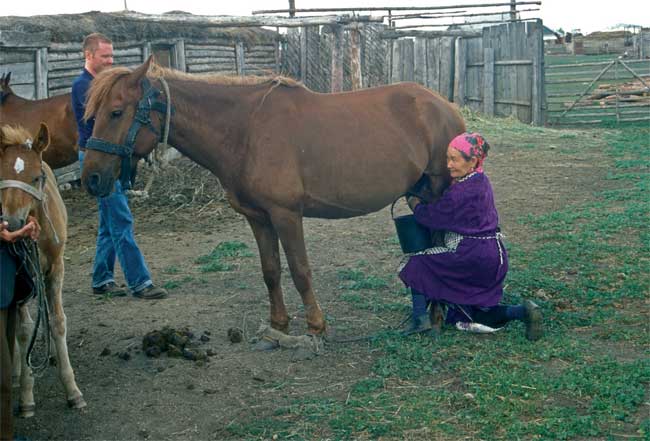Domestic Horse Ridden Further Back in Time

People were riding horses much earlier than previously thought, new archaeological finds suggest.
Scientists have now traced the first conclusive evidence of domesticated horses back to Kazakhstan, about 5,500 years ago. That's 1,000 years earlier than we already knew about, and about 2,000 years before domesticated horses showed up in Europe.
Archaeologists have uncovered thousands of horse bones at the site of the ancient Botai culture in Kazakhstan. Until now, no one was able to tell for sure whether these bones belonged to wild horses that had been hunted by the humans, or domesticated horses.
But recently scientists analyzed the horses' lower leg bones, and found that they more closely resembled those of later known domestic horses rather than those of ancient wild horses. The researchers also developed a new method to identify the chemical signatures of fat from horse milk, and were able to find these traces on Botai pottery fragments. Finally, a few of the ancient horse skulls bore physical markings on the teeth that could have been made by the use of a harness with a bit in the mouth.
"The invention of a method to identify the fat residues left by horse milk in ceramic pots is a spectacular and brilliant advance," archaeologists David Anthony and Dorcas Brown of Hartwick College in New York, who were not involved in the research, wrote in an e-mail. "If you’re milking horses, they are not wild."
The advent of horsemanship was a major advance for civilization, right up there with inventing the wheel and making tools out of iron. For one thing, it meant people could travel much farther, and much more quickly, than before.
"When people began to ride, it revolutionized human transport," Anthony and Brown said. "We still measure the power of our transportation technologies in horsepower, because for millennia, until just about 150 years ago, that was the fastest transport humans had."
Sign up for the Live Science daily newsletter now
Get the world’s most fascinating discoveries delivered straight to your inbox.
Horses were also a valuable source of milk and meat for food. In fact, the remains in Kazakhstan suggest horses accounted for 99 percent of the Botai diet.
"They're really concentrated on the horse," said Alan Outram of the University of Exeter, lead author of a paper detailing the results published March 6 in the journal Science. "They're eating them, milking them, and riding them."
The Botai people lived in planned-out villages, with houses partly buried underground. They were less nomadic than previous residents of that area, which is why archaeologists have an easier time studying their remains, compared to earlier peoples who moved around so often, they didn't leave large deposits in any one place. Experts suspect that some of these even earlier groups may have also domesticated horses, though.
"We'll probably be looking more widely now trying to apply the same techniques to other sites," Outram told LiveScience. "I wouldn’t be surprised if we find even earlier ones. I think even if there are earlier sites, they're still going to be in the Steppe area, where those big grass plains are."
- Video: Wild Horses of Mongolia with Julia Roberts
- The Surprising History of America's Wild Horses
- Video: Horse and Rider










